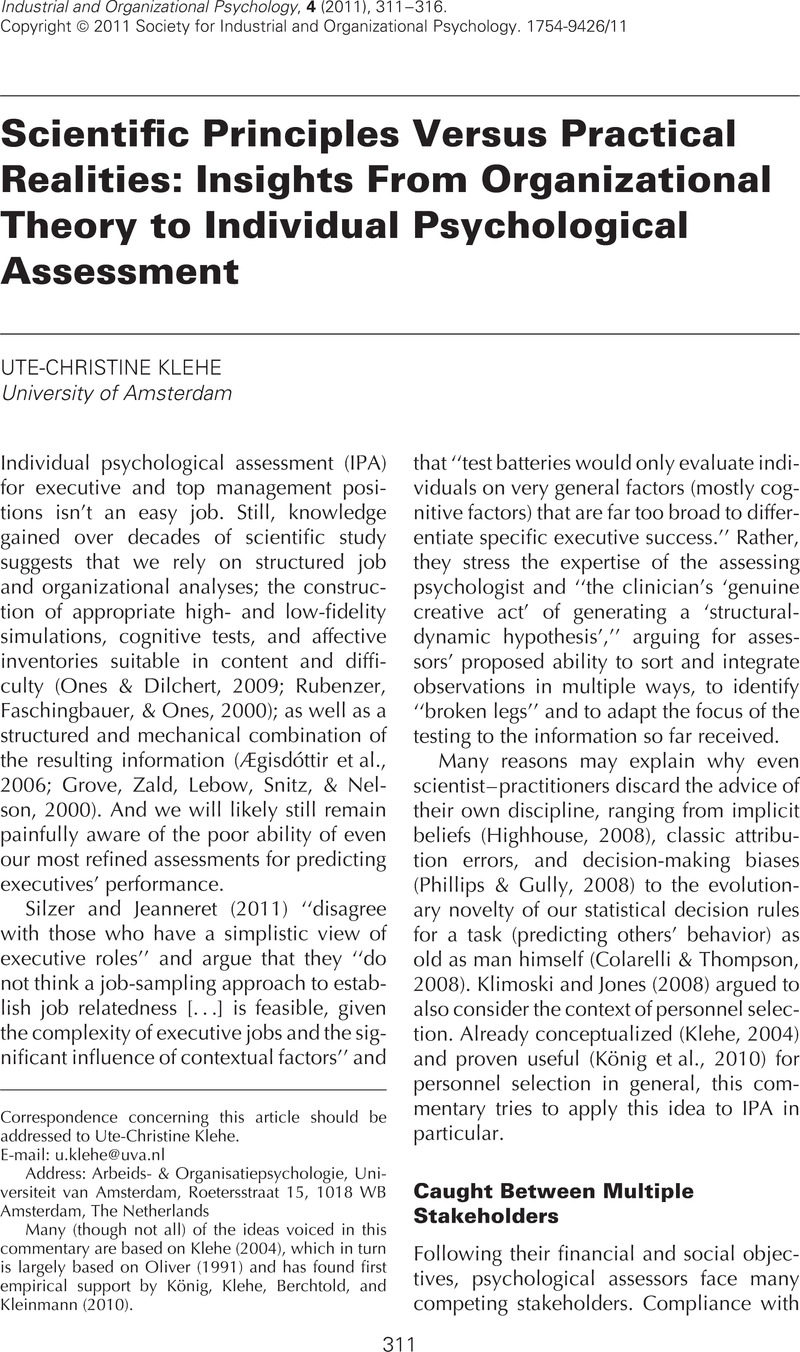Crossref Citations
This article has been cited by the following publications. This list is generated based on data provided by Crossref.
Jeanneret, Richard
and
Silzer, Rob
2011.
Individual Psychological Assessment: A Core Competency for Industrial–Organizational Psychology.
Industrial and Organizational Psychology,
Vol. 4,
Issue. 3,
p.
342.



